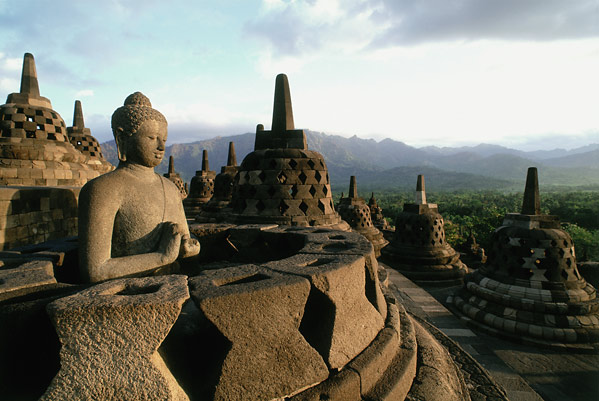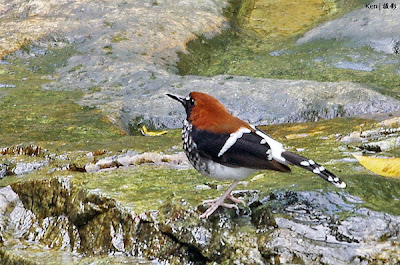Traveling to Hala Bala Thailand. Thailand has 103 National Parks covering nearly 52.782 sq.km. or over 10% of the country's land area. A further 45 new National Parks are in the process of being esteblished, covering an additional area of 20.862 sq.km. as of august 2005.
In the Western part of Thailand there is one of the largest protected territories in South East Asia, covering 18,730 square km in Thailand and across the border in Myanmar, it's called the Western Forrest Complex.
In the Western part of Thailand there is one of the largest protected territories in South East Asia, covering 18,730 square km in Thailand and across the border in Myanmar, it's called the Western Forrest Complex.
Hala-Bala is one of Thailands more recent conservation areas. Officially established in 1996, the reserve is located near the Thai-Malaysian border. Covering an area of approximately 433.16 square kilometers, it extends over Sankala Khiri Mountain Range and the deep forests of Hala and Bala Forests that are not connected to each other. Although they are a part of the same reserve, Hala Forest is in Amphoe Betong in Yala Province and Amphoe Chanae in Narathiwat Province while Bala Forest, the only part that is open to the public, spans Amphoe Waeng and Amphoe Su Khirin in Narathiwat.
Hala-Bala is one of Thailands more recent conservation areas. Officially established in 1996, the reserve is located near the Thai-Malaysian border. Covering an area of approximately 433.16 square kilometers, it extends over Sankala Khiri Mountain Range and the deep forests of Hala and Bala Forests that are not connected to each other. Although they are a part of the same reserve, Hala Forest is in Amphoe Betong in Yala Province and Amphoe Chanae in Narathiwat Province while Bala Forest, the only part that is open to the public, spans Amphoe Waeng and Amphoe Su Khirin in Narathiwat.
Hala-Bala Wildlife Sanctuary, in Narathiwat province, is made up of two sectors; Hala sector and Bala sector. Hala sector is seldom-visited and quite undocumented, however, Bala sector has been receiving visitors for about 10 years now. Prior to that this area was a stronghold of Islamic insurgents and not a safe place to be.
The Bala sector of this Wildlife Sanctuary consists mainly of lowland forest on the border with Malaysia making it just about the only place in Thailand where many lowland Sundaic species can be found. In addition to this, the forest is exceptionally beautiful with lots of mature trees and clear streams and these, together with the remote location, give visitors a real sense of wilderness.
Hala-Bala Wildlife Reserve
A not-to-be-missed attraction for nature lovers, Hala-Bala is one of Thailands more recent conservation areas. Officially established in 1996, the reserve is located near the Thai-Malaysian border. Covering an area of approximately 433.16 square kilometers, it extends over Sankala Khiri Mountain Range and the deep forests of Hala and Bala Forests that are not connected to each other.
Although they are a part of the same reserve, Hala Forest is in Amphoe Betong in Yala Province and Amphoe Chanae in Narathiwat Province while Bala Forest, the only part that is open to the public, spans Amphoe Waeng and Amphoe Su Khirin in Narathiwat.Highway No. 4062 (Khwam Man Khong Road) goes through Sankala Khiri Mountain Range, making access to the reserve easier. Visitors can start at Ban Buketa in Amphoe Waeng, go through Bala Forest and end up at Ban Phu Khao Thong in Amphoe Su Khirin for a total distance of 18 kilometers.
On both sides of the road are the most verdant jungles in Thailand. To study nature, you only have to drive through the area and you will likely see many extraordinary things from the park office on.For nature enthusiasts, simply driving through the area from the Park Office onwards will provide extraordinary views of nature. Approximately 5 kilometers from the office, is a wildlife lookout point. The numerous Banyan trees flourishing in the area yield plenty of fruit for animals that regularly come to feed there. About 10 kilometers further is the Phu Khao Thong Protection Unit, a sub-office of the reserve. From here it is possible to see a sea of mist at dawn.
The Bala sector of this Wildlife Sanctuary consists mainly of lowland forest on the border with Malaysia making it just about the only place in Thailand where many lowland Sundaic species can be found. In addition to this, the forest is exceptionally beautiful with lots of mature trees and clear streams and these, together with the remote location, give visitors a real sense of wilderness.
Hala-Bala Wildlife Reserve
A not-to-be-missed attraction for nature lovers, Hala-Bala is one of Thailands more recent conservation areas. Officially established in 1996, the reserve is located near the Thai-Malaysian border. Covering an area of approximately 433.16 square kilometers, it extends over Sankala Khiri Mountain Range and the deep forests of Hala and Bala Forests that are not connected to each other.
Although they are a part of the same reserve, Hala Forest is in Amphoe Betong in Yala Province and Amphoe Chanae in Narathiwat Province while Bala Forest, the only part that is open to the public, spans Amphoe Waeng and Amphoe Su Khirin in Narathiwat.Highway No. 4062 (Khwam Man Khong Road) goes through Sankala Khiri Mountain Range, making access to the reserve easier. Visitors can start at Ban Buketa in Amphoe Waeng, go through Bala Forest and end up at Ban Phu Khao Thong in Amphoe Su Khirin for a total distance of 18 kilometers.
On both sides of the road are the most verdant jungles in Thailand. To study nature, you only have to drive through the area and you will likely see many extraordinary things from the park office on.For nature enthusiasts, simply driving through the area from the Park Office onwards will provide extraordinary views of nature. Approximately 5 kilometers from the office, is a wildlife lookout point. The numerous Banyan trees flourishing in the area yield plenty of fruit for animals that regularly come to feed there. About 10 kilometers further is the Phu Khao Thong Protection Unit, a sub-office of the reserve. From here it is possible to see a sea of mist at dawn.
Walking about 100 meters from the unit, visitors will find a gigantic Somphong (Kraphong) tree that has a diameter of 25 meters. The height of a section near the ground that supports the trunk is about 4 meters. This tree likes to grow near water and is a softwood tree used in making toothpicks or matches. Along the route are several plants that are rarely found elsewhere in Thailand such as the Yuan tree of the bean family. This tree is regarded as the third tallest tree in the world, after the redwood and eucalyptus, respectively. It has a white trunk and can reach a height of 65 to70 meters. Normally, the tree is perfect for making furniture. Another tree located here is the Saya tree of the rubber family, which is the most striking tree of the Hala-Bala forest.
Looking carefully, visitors will see hornbills as the forest are their preferred nesting sites. In addition, it is possible to see the Hua Roi Ru Nam tree, which is one of the newest plants found in the country.Wildlife here creates an ecological balance for the area. Many of the animals are on the list of nearly-extinct animals of Thailand. They include the large black gibbon, or Sia Mang, that is totally black in color and nearly double the size of the white-handed gibbon. There is also the agile gibbon that is usually found on Sumatra, Borneo and northern Malaysian jungles and southern Thailand. With luck, visitors may be able to see two of these creatures hanging from a branch. The area also has Thut frogs that are the largest frogs in the country. It is about a foot long and weighs over 5 kilograms. The frogs live in watershed forests on high mountains. A survey discovered that four types of protected mammals, which are the Sumatran serow, tapir, marbled cat, and Asian two-horned rhinoceros, inhabit the area.The hornbill, a rare bird, is an indicator of the state of the forest. Nonetheless, the reserve has 9 out of 12 species of hornbills in Thailand. These include the wrinkled hornbill, helmeted hornbill (the only kind of hornbill that has a thick upper beak and Indonesian villagers hunt it to get the beak to carve into ornaments like ivory), Oriental pied hornbill, great pied hornbill, white-crowned hornbill, bushy-crested hornbill, Malayan rhinoceros hornbill, black hornbill, and wreathed hornbill.
Visitors wishing to enter the area for nature study must write in advance to the reserve at P.O. Box 3, Amphoe Waeng, Narathiwat 96120 or the Wildlife Reserve Department of the Natural Resources Conservation Office, Royal Forest Department, Bangkok. As the reserve is a sensitive area, visitors are not permitted to stay overnight. The best time to study nature here is from late February to September, when there is little rain.
Getting there: Mini-buses can be hired from Amphoe Waeng Market or from Su-ngai Kolok train station.
The hornbill, a rare bird, is an indicator of the state of the forest. Nonetheless, the reserve has 9 out of 12 species of hornbills in Thailand. These include the wrinkled hornbill, helmeted hornbill (the only kind of hornbill that has a thick upper beak and Indonesian villagers hunt it to get the beak to carve into ornaments like ivory), Oriental pied hornbill, great pied hornbill, white-crowned hornbill, bushy-crested hornbill, Malayan rhinoceros hornbill, black hornbill, and wreathed hornbill. Visitors wishing to enter the area for nature study must write in advance to the reserve at P.O. Box 3, Amphoe Waeng, Narathiwat 96120 or the Wildlife Reserve Department of the Natural Resources Conservation Office, Royal Forest Department, Bangkok. As the reserve is a sensitive area, visitors are not permitted to stay overnight. The best time to study nature here is from late February to September, when there is little rain
Hala Bala Travel Information
Beautiful Thai Girls
Getting to the Bala Sector of Hala-Bala Wildlife Sanctuary is not as difficult as one might think. I would recommend going by car, hiring one in one of the southern towns; they would be widely available from Phuket or Krabi. The main highway south goes to Narathiwat and from there signposts to Sungai Kolok should be followed. If travelling by public transport, there are plenty of buses from the southern bus terminal in Bangkok to Sungai Kolok. The journey takes in the region of 16 hours. From Sungai Kolok follow the main road to Waeng and from there continue along the road which heads to the border. Shortly after leaving Waeng, Bala Wildlife Sanctuary is signposted; simply follow these. If arriving in Sungai Kolok by public transport one would have to look around for transport to the park; the border crossing to Malaysia would be a starting point for this. However, I wouldn't advise attempting to arrive by public transport without having a car to drive to the park, particularly when security is an issue in this part of Thailand. Happy traveling....!












